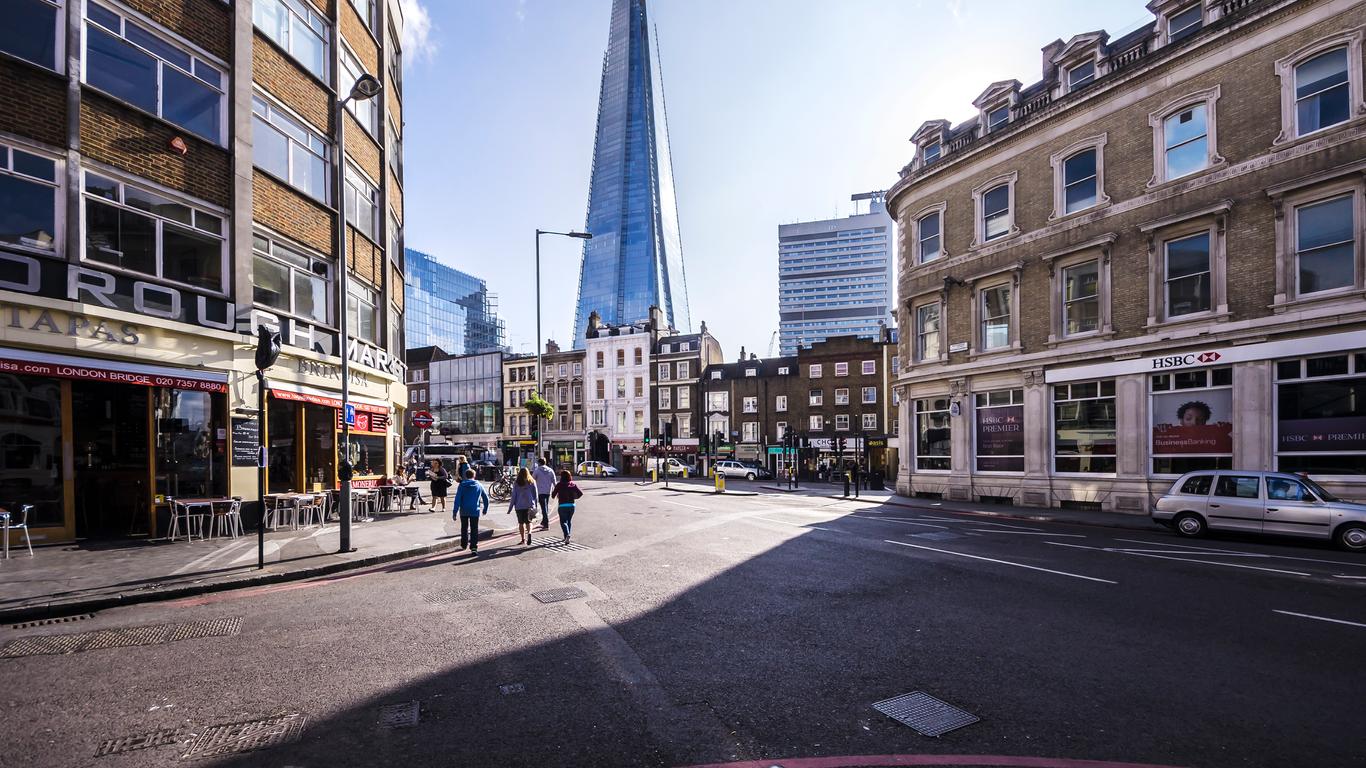Southwark is home to some of the most iconic sights and attractions in London. The borough is one of the oldest in the capital and stretches along the banks of the River Thames. Walking around Southwark, you’ll see centuries-old churches and cathedrals standing alongside glass-and-steel skyscrapers. Step back in time at landmarks like Shakespeare's Globe and admire modern masterpieces at one of the top contemporary galleries in Europe.
Things to do in Southwark
Tate Modern occupies the former Bankside Power Station and is a modern art mecca. The industrial building is cleverly reimagined as a contemporary gallery, where you can admire works by masters like Andy Warhol, Picasso and David Hockney. The cavernous Turbine Hall hosts larger-than-life installations and temporary exhibits.
London’s legendary Borough Market has been in business for more than 1,000 years. Within the cavernous market, you’ll find all kinds of high-end produce, from artisan cheese and charcuterie to gourmet cupcakes and rainbow-coloured macarons. The produce stalls hook up some of the city’s top restaurants. If you don’t need groceries, it’s a great spot to enjoy lunch. Food stalls will tempt you with fresh-baked paninis, Caribbean stews, seafood paella, German sausages and more.
Whether you attend a play or join a guided tour, Shakespeare's Globe offers a glimpse of life in 17th-century London. The riverside theatre was once a stomping ground for the famous playwright and continues to host performances of Hamlet, King Lear and Romeo and Juliet. Stop in for a pint at The George before the show. Like the theatre, the cosy pub has been welcoming patrons since the 17th century.
Getting around Southwark
Southwark is pedestrian-friendly and easy to get around on foot. Bridges span across the River Thames and connect Southwark with the City of London, while tube access is via Southwark Station on the Jubilee Line. Southwark is in South London, a 1.5-hour drive from Heathrow Airport and one hour by train.





